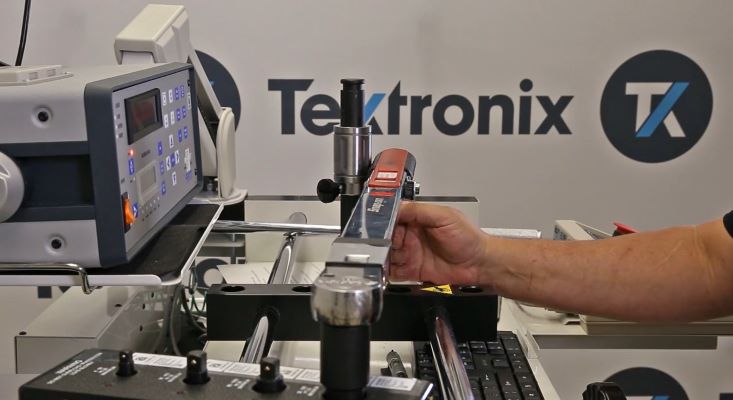Torque Calibration Explained: Processes, Frequency, and Provider Selection

From automotive assembly lines to aerospace engineering, the precise application of torque is essential for safety, reliability, and product quality. Torque tools—wrenches, screwdrivers, and analyzers—must deliver exact rotational force to fasteners. But how can you ensure their accuracy over time? The answer lies in rigorous torque calibration.
This guide provides an in-depth exploration of torque calibration, integrating advanced metrology concepts, global standards, and best practices. Whether you’re a quality manager, engineer, or metrology specialist, understanding these principles will empower you to uphold the highest standards in your organization.
What is Torque Calibration?
Torque calibration is the process of comparing a torque instrument’s output against metrological standards typically traceable to the International System of Units (SI) through a national measurement institute (e.g., NIST). This “health check” verifies that the tool applies the intended force. If deviations are found, the tool is adjusted back into tolerance. The process is documented in a calibration certificate, providing the measurement results, associated uncertainties, and traceability information.
Measurement uncertainty is a critical parameter in calibration. Accredited labs calculate and report uncertainty using statistical methods, as outlined in ISO/IEC Guide 98-3 (GUM). This quantifies confidence in the calibration result and is essential for risk assessment.
Why Torque Calibration is Crucial for Quality and Safety
Torque calibration is fundamental to maintaining product reliability and ensuring safety in critical applications. When torque tools are not calibrated, the risk of over-torque or under-torque increases, which can result in product failures, safety hazards, and costly recalls.
Proper calibration ensures that fasteners are secured as designed, preventing loose bolts that could lead to catastrophic failures or over-tightened bolts that may damage components and compromise structural integrity.
In industries such as automotive, aerospace, and medical devices, the consequences of improper torque can be severe, making calibration a non-negotiable aspect of safety engineering. Furthermore, regular calibration supports compliance with quality management systems like ISO 9001 and IATF 16949, which mandate traceable calibration records for all measurement equipment.
By investing in torque calibration, organizations proactively reduce costs associated with rework, warranty claims, and material waste, while also safeguarding their reputation for quality and reliability.
Tools and Instruments That Require Torque Calibration
A wide range of instruments require periodic torque calibration to maintain their effectiveness and accuracy. Any tool used to apply or verify a specific torque value should be included in a calibration program.
- Click-Type, Beam, Dial, and Digital Torque Wrenches
- Torque Screwdrivers
- Pneumatic, Electric, and Hydraulic Torque Tools
- Torque Multipliers
With the advancement of digital calibration management systems, organizations can now automate scheduling, data logging, and interval optimization, making it easier to manage large inventories of torque tools and maintain compliance with industry standards.

Understanding the Torque Calibration Process
At Tektronix, torque calibration is performed using advanced automated systems that ensure consistent, repeatable results and minimize human error. Our process begins with a thorough inspection and cleaning, followed by precise “as found” and “as left” testing using state-of-the-art torque analyzers. If adjustments are needed, our certified technicians restore tools to optimal accuracy, and all results are documented in digital calibration certificates accessible for audits. Tektronix’s proprietary scheduling and data management solutions – CalWeb, allow clients to track calibration intervals, compliance status, and tool performance across global sites, streamlining quality management and reducing downtime.
Key Standards in Torque Calibration
Torque calibration is governed by a range of international standards that ensure consistency, reliability, and traceability.
- ISO 6789 is the primary standard for hand torque tools, specifying requirements for design, conformance testing, and calibration procedures for wrenches and screwdrivers.
- Laboratories performing torque calibration must also adhere to ISO/IEC 17025, which sets out the general requirements for the competence of testing and calibration labs.
- In North America, ASTM E2624 provides guidelines for torque calibration, while JIS B 4652 serves as the Japanese Industrial Standard for torque tools.
- Traceability to national standards, such as those maintained by NIST in the United States or equivalent bodies worldwide, is essential for quality audits and regulatory compliance.
For organizations operating globally, it is important to consult regional standards and ensure that calibration providers can meet the specific requirements of each market.
Determining Your Torque Calibration Frequency
The frequency of torque calibration should be determined based on a combination of manufacturer recommendations, quality system requirements, application criticality, operating environment, usage frequency, and historical performance data.
While a common starting point is to calibrate torque tools every twelve months or every 5,000 cycles, whichever comes first, this interval should be adjusted according to the specific needs of the organization. Tools used in critical applications or harsh environments may require more frequent calibration, while those that consistently remain within tolerance could have their intervals extended.
Tektronix’s calibration experts collaborate with clients to assess manufacturer recommendations, the criticality of each application, environmental conditions, and historical performance data. Using our proprietary calibration management platform - CalWeb, we track tool usage, monitor calibration intervals, and analyze trends in tool stability. This enables us to recommend risk-based calibration schedules that optimize resource allocation and ensure compliance with standards such as ISO 9001, IATF 16949, and ISO/IEC 17025.
Advanced Considerations in Torque Calibration
Advanced torque calibration today demands more than technical accuracy—it requires a holistic, proactive approach to asset management, field service, and operational uptime. Tektronix addresses these needs through its Active Exchange - Field Service Managed Calibration, a solution designed for organizations seeking seamless calibration management across diverse and distributed environments.
With Tektronix Active Exchange, calibration is no longer a reactive task but an integrated, actively managed process. Our service leverages automated scheduling, our proprietary calibration management platform - CalWeb and rapid exchange of assets, to ensure every torque tool is always calibrated, regardless of location or operational complexity. This managed calibration model means your tools are always in compliance, reducing downtime and eliminating the logistical challenges of shipping tools to a central lab, resulting in minimizing risk and maximizing field service operation productivity.
How to Choose a Reliable Torque Calibration Provider
Selecting the right torque calibration provider is critical to ensuring the accuracy and reliability of your tools.
- Look for providers that hold ISO/IEC 17025 accreditation, as this serves as independent proof of technical competence and quality.
- Ensure that their calibration standards are traceable to the International System of Units (SI) through a national measurement institute (e.g., NIST).
- A reputable provider will be able to state the measurement uncertainty of their calibration results, giving you confidence in the data.
- It is also important to choose a provider with broad capabilities, able to service the full range of tool types and brands used in your operations.
- Efficient turnaround times minimize downtime and keep your processes running smoothly.
- Finally, comprehensive documentation—including clear certificates with “as found” and “as left” data, uncertainty values, and traceability information—is essential for meeting audit and compliance requirements.
Tektronix: Your Partner for Automated Torque Calibration
Tektronix offers precise, reliable, and efficient torque calibration services for a wide range of tools and manufacturers. Our automated systems enhance accuracy and reduce turnaround time. As an ISO/IEC 17025 accredited provider, all calibrations are traceable to NIST, ensuring compliance with the strictest global standards. Our multi-brand capabilities simplify calibration management for global operations.
Ready to ensure every fastening is performed with certified accuracy?
Contact Tektronix today to discuss your torque calibration needs or request a quote.


